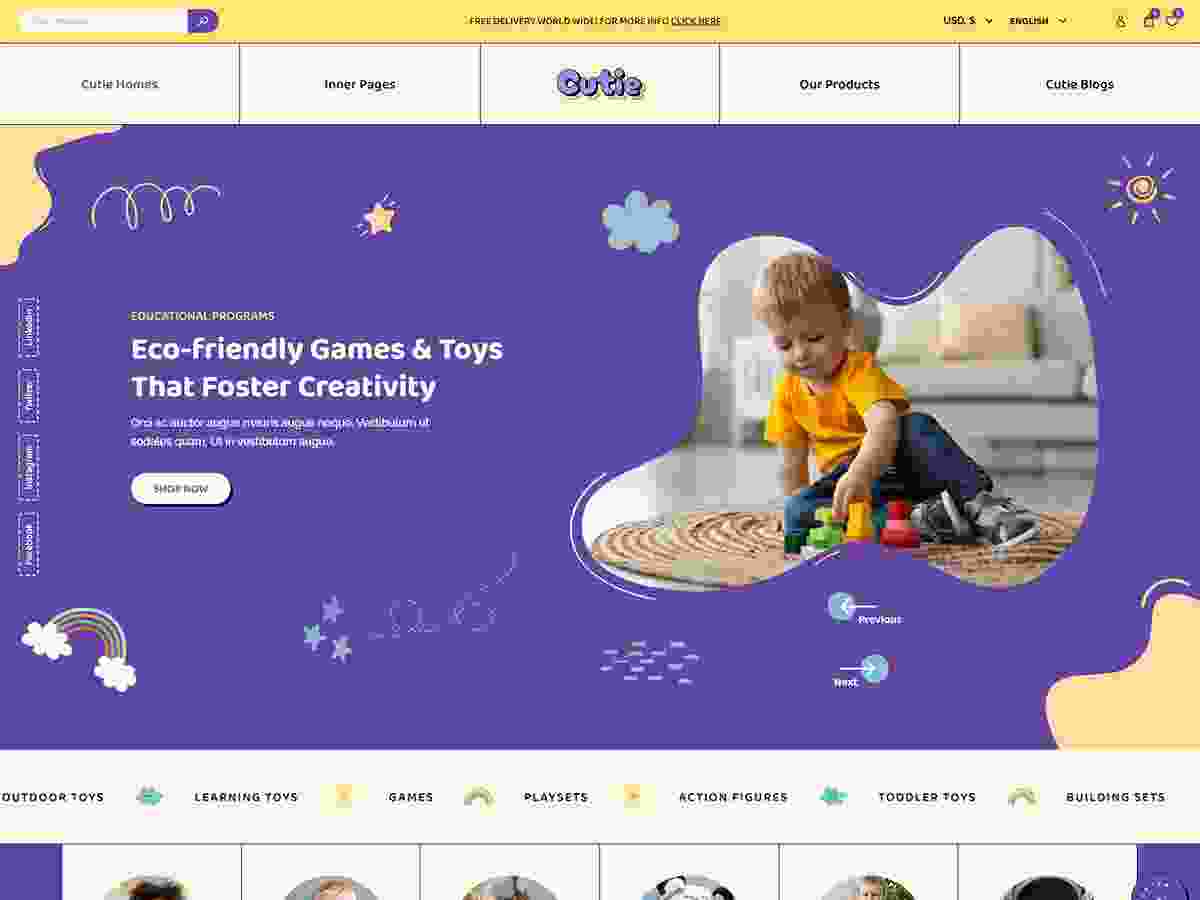Loreal Hair Spa Cream Ingredients are essential for a revitalizing hair care routine, and spa-wear.com is here to guide you through understanding and choosing the best products for a luxurious at-home or in-spa experience. By understanding these components, you can ensure that you select the ideal hair spa cream for your unique hair care requirements, enhancing your spa experience.
1. What Are Sulfates and Why Should You Avoid Them in Hair Spa Creams?
Sulfates in hair spa creams are detergents that create a foamy lather, but you should avoid them due to their potential to cause irritation and dryness. While sulfates effectively remove dirt and oil, they can strip your hair of its natural moisture, leading to dryness, frizz, and scalp irritation, according to the American Academy of Dermatology. Opting for sulfate-free alternatives ensures a gentler and more hydrating hair spa experience.
- What are sulfates? Sulfates are surfactants commonly used in shampoos and hair spa creams to create a rich lather.
- Why are they used? They effectively cleanse the hair by removing oil and dirt.
- Why avoid them? Sulfates can strip the hair of its natural oils, leading to dryness, frizz, and scalp irritation.
- Common sulfates to avoid: Sodium Lauryl Sulfate (SLS), Sodium Laureth Sulfate (SLES), and Ammonium Lauryl Sulfate (ALS).
- Sulfate-free alternatives: Look for hair spa creams that use milder surfactants like Cocamidopropyl Betaine, Sodium Cocoyl Isethionate, or Decyl Glucoside.
2. Why Are Parabens Harmful and How to Identify Them in Loreal Hair Spa Creams?
Parabens are preservatives that can disrupt hormones, making it crucial to identify and avoid them in Loreal hair spa creams for safer hair care. Parabens mimic estrogen in the body and have been linked to potential hormone disruption and an increased risk of breast cancer, according to research published in the Journal of Applied Toxicology. To identify them, check the ingredient list for terms like methylparaben, ethylparaben, propylparaben, butylparaben, and isobutylparaben.
- What are parabens? Parabens are preservatives used to extend the shelf life of hair spa creams and other cosmetic products.
- Why are they used? They prevent the growth of bacteria and fungi, ensuring the product remains safe for use over time.
- Why avoid them? Parabens are known endocrine disruptors, meaning they can interfere with the body’s hormonal balance.
- Common parabens to avoid: Methylparaben, Ethylparaben, Propylparaben, Butylparaben, and Isobutylparaben.
- Paraben-free alternatives: Choose hair spa creams labeled “paraben-free” or that use alternative preservatives like phenoxyethanol, sodium benzoate, or potassium sorbate.
3. How Do Silicones Affect Your Hair and Why Should You Choose Silicone-Free Hair Spa Creams?
Silicones provide a temporary smooth feel but can build up and prevent moisture from penetrating, so you should choose silicone-free hair spa creams for long-term hair health. While silicones give an immediate silky texture, they create a barrier that blocks hydration and can lead to dryness and brittleness over time, explains trichologist Dr. Kari Williams in an interview with Allure. Opting for silicone-free products ensures your hair receives genuine nourishment.
- What are silicones? Silicones are synthetic polymers that create a smooth, silky feel on the hair.
- Why are they used? They provide instant detangling, reduce frizz, and add shine.
- Why avoid them? Silicones can build up on the hair shaft, preventing moisture from penetrating and leading to dryness and brittleness.
- Common silicones to avoid: Dimethicone, Cyclomethicone, Amodimethicone, and Dimethiconol.
- Silicone-free alternatives: Look for hair spa creams with natural oils and butters like argan oil, shea butter, and coconut oil.
4. What is Mineral Oil and Why is it Not Ideal for a Loreal Hair Spa Treatment?
Mineral oil coats the hair without providing real moisture, making it a less ideal ingredient for a Loreal hair spa treatment focused on deep hydration. Although mineral oil adds shine, it forms a barrier that prevents essential nutrients and moisture from penetrating the hair shaft, leading to dryness and potential damage, according to cosmetic chemist Ron Robinson in an article for the Paula’s Choice website. For a truly nourishing spa experience, opt for creams with natural oils.
- What is mineral oil? Mineral oil is a petroleum-derived ingredient used as a conditioning agent in hair care products.
- Why is it used? It’s inexpensive and creates a glossy sheen on the hair.
- Why avoid it? Mineral oil doesn’t penetrate the hair shaft, instead coating it and preventing moisture absorption, which can lead to dryness over time.
- Alternatives to mineral oil: Natural oils like coconut oil, argan oil, and jojoba oil provide better hydration and nourishment.
5. What are Phthalates and Why Should You Avoid Them in Hair Products?
Phthalates are chemicals linked to hormone disruption and potential health risks, so you should avoid them in hair products for safer, healthier hair care. Phthalates have been shown to interfere with the endocrine system and may have adverse effects on reproductive health, according to the National Institute of Environmental Health Sciences. Avoiding phthalates ensures a safer and more health-conscious approach to hair care.
- What are phthalates? Phthalates are chemicals used to increase the flexibility and longevity of fragrances and other cosmetic ingredients.
- Why are they used? They help products maintain their scent and texture.
- Why avoid them? Phthalates are endocrine disruptors, which means they can interfere with hormone function and potentially cause developmental and reproductive issues.
- How to identify phthalates: Look for the word “phthalate” on the ingredient list or “fragrance” as it often hides the presence of phthalates.
- Phthalate-free alternatives: Opt for products labeled “phthalate-free” or those that use natural fragrances and essential oils.
6. How Can Alcohols Both Benefit and Harm Your Hair in Spa Creams?
Alcohols can help ingredients penetrate but also cause dryness, so it’s crucial to differentiate between beneficial and harmful alcohols in spa creams. While some alcohols like cetyl, stearyl, and cetearyl alcohol are fatty alcohols that moisturize and condition, others like isopropyl alcohol and alcohol denat can strip the hair of its natural oils, leading to dryness and damage, explains hairstylist Jennifer Nast in an interview with Byrdie. Understanding the type of alcohol in your hair spa cream is essential for maintaining healthy, hydrated hair.
- What are alcohols in hair products? Alcohols are used in hair products for various purposes, including helping ingredients penetrate the hair shaft and providing a quick-drying effect.
- Why are they used? They can enhance the effectiveness of other ingredients and create a lightweight feel.
- Why differentiate? Not all alcohols are bad for hair. Fatty alcohols like cetyl, stearyl, and cetearyl alcohol are moisturizing, while others can be drying.
- Beneficial alcohols: Cetyl alcohol, Stearyl alcohol, Cetearyl alcohol, and Behenyl alcohol.
- Harmful alcohols: Isopropyl alcohol, Alcohol denat, Ethanol, and Propanol.
7. Why Should You Be Cautious About Chemical Dyes in Hair Spa Products?
Chemical dyes can cause skin irritation and allergic reactions, making it important to be cautious about their presence in hair spa products. Many synthetic dyes are derived from petrochemicals and may contain impurities that can irritate the scalp or trigger allergic reactions, according to the Environmental Working Group (EWG). Opting for products with natural dyes or no dyes can minimize these risks.
- What are chemical dyes in hair products? Chemical dyes are synthetic colors added to hair products to enhance their appearance.
- Why are they used? They make products visually appealing.
- Why be cautious? Some chemical dyes can cause skin irritation, allergic reactions, and may contain harmful impurities.
- Common chemical dyes: FD&C Blue No. 1, FD&C Yellow No. 5, and D&C Red No. 33.
- Safer alternatives: Natural dyes derived from plants, fruits, and vegetables, such as beetroot extract, henna, and chamomile.
8. What Are Added Fragrances and Why Should You Prefer Fragrance-Free Options?
Added fragrances can cause irritation and allergies, so you should prefer fragrance-free options to avoid potential skin sensitivities. Synthetic fragrances often contain a mix of chemicals that can trigger allergic reactions, skin irritation, and even respiratory problems, as noted by the Mayo Clinic. Choosing fragrance-free products minimizes exposure to these potential irritants and promotes overall skin health.
- What are added fragrances? Added fragrances are synthetic scents used to make hair products smell appealing.
- Why are they used? They enhance the user experience by providing a pleasant aroma.
- Why prefer fragrance-free? Fragrances can cause allergic reactions, skin irritation, and respiratory issues in sensitive individuals.
- How to identify added fragrances: Look for “fragrance,” “parfum,” or “aroma” on the ingredient list.
- Benefits of fragrance-free options: Reduced risk of irritation, better for sensitive skin, and fewer chemicals.
9. What is PPD and Why is it Critical to Avoid it in Hair Dyes Used During Spa Treatments?
PPD (para-phenylenediamine) is a chemical in hair dyes that can cause severe allergic reactions, making it critical to avoid in hair dyes used during spa treatments. PPD is a known contact allergen that can lead to dermatitis, skin blistering, and even permanent scarring, according to research published in the journal Contact Dermatitis. For client safety and well-being, opt for PPD-free hair dyes.
- What is PPD? PPD (para-phenylenediamine) is a chemical compound used in permanent and semi-permanent hair dyes.
- Why is it used? It allows for a wide range of hair color options and long-lasting results.
- Why avoid it? PPD is a strong allergen that can cause severe skin irritation, allergic reactions, and even permanent scarring.
- How to identify PPD: Check the ingredient list for “para-phenylenediamine” or “PPD.”
- Safer alternatives: Hair dyes that use natural colorants or are labeled as “PPD-free.”
10. What are PEGs and Why Should You Be Wary of Them in Loreal Hair Spa Creams?
PEGs (Polyethylene Glycols) can be contaminated with harmful chemicals and may cause skin irritation, making it important to be wary of them in Loreal hair spa creams. PEGs are petroleum-based compounds that can be contaminated with ethylene oxide and 1,4-dioxane, both of which are known carcinogens, according to the Organic Consumers Association. While some PEGs are considered safe, the risk of contamination makes it prudent to choose PEG-free products.
- What are PEGs? PEGs (Polyethylene Glycols) are petroleum-based compounds used as thickening agents, solvents, and emollients in hair products.
- Why are they used? They help to blend ingredients and create a smooth texture.
- Why be wary? PEGs can be contaminated with ethylene oxide and 1,4-dioxane, which are known carcinogens. They can also cause skin irritation in some individuals.
- How to identify PEGs: Look for ingredients that start with “PEG-” followed by a number (e.g., PEG-40, PEG-100).
- Safer alternatives: Natural alternatives like glycerin, aloe vera, and plant-based oils.
11. What is Triclosan and Why Was it Banned in Soaps But Still Found in Some Shampoos?
Triclosan is an antibacterial agent that can disrupt hormones and promote antibiotic resistance, which led to its ban in soaps but it may still be found in some shampoos. Triclosan has been shown to interfere with thyroid hormones and contribute to the development of antibiotic-resistant bacteria, according to the FDA. While banned in soaps due to these concerns, it may still be present in some shampoos as an antibacterial agent.
- What is Triclosan? Triclosan is an antibacterial and antifungal agent previously used in soaps and other personal care products.
- Why was it used? It helped to kill bacteria and prevent infections.
- Why was it banned in soaps? The FDA banned triclosan in soaps due to concerns about its potential to disrupt hormones and contribute to antibiotic resistance.
- Why might it still be in some shampoos? It may be used in some shampoos for its antibacterial properties, although its use is becoming less common.
- Health concerns: Hormone disruption, antibiotic resistance, and potential environmental impact.
12. How Can Retinyl Palmitate in Conditioners Affect Your Skin?
Retinyl palmitate can increase skin sensitivity to UV rays and cause irritation, so it’s important to consider its potential effects when using conditioners. Retinyl palmitate, a form of vitamin A, can make the skin more susceptible to sun damage and may cause redness, peeling, and irritation, according to the Skin Cancer Foundation. Using conditioners with this ingredient requires caution, especially if you have sensitive skin.
- What is Retinyl Palmitate? Retinyl Palmitate is a form of vitamin A used in cosmetics for its antioxidant and skin-renewing properties.
- How it affects your skin: It can increase skin sensitivity to UV rays, leading to a higher risk of sunburn and skin damage.
- Potential side effects: Skin irritation, redness, peeling, and increased sun sensitivity.
- Who should be cautious: Individuals with sensitive skin or those who spend a lot of time outdoors.
- Alternatives: Look for conditioners with other beneficial ingredients like natural oils, plant extracts, and vitamins.
13. Why is Benzene a Concerning Ingredient in Hair Products Like Dyes and Dry Shampoos?
Benzene is a known carcinogen that can weaken the immune system, making it a concerning ingredient in hair products like dyes and dry shampoos. Benzene exposure has been linked to an increased risk of leukemia and other blood cancers, as confirmed by the National Toxicology Program. Its presence in hair products has led to recalls and heightened scrutiny of cosmetic ingredients.
- What is Benzene? Benzene is a volatile organic compound (VOC) known for its carcinogenic properties.
- Why is it concerning? Exposure to benzene has been linked to an increased risk of leukemia and other blood cancers.
- Products of concern: Hair dyes, dry shampoos, and other aerosol products.
- Health risks: Weakened immune system, birth defects, and increased risk of cancer.
- What to look for on labels: Toluene, methylbenzene, phenylmethane, and toluol.
14. What are the Risks Associated with Resorcinol in Hair Dyes and Anti-Dandruff Treatments?
Resorcinol can cause skin irritation, hormone disruption, and organ damage, making it important to be aware of the risks associated with its use in hair dyes and anti-dandruff treatments. Resorcinol has been shown to disrupt the endocrine system and may cause irritation to the skin, eyes, and respiratory tract, according to the National Institutes of Health. Avoiding products with resorcinol can help minimize these potential health risks.
- What is Resorcinol? Resorcinol is a chemical compound used in hair dyes, anti-dandruff treatments, and other cosmetic products.
- What are the risks? Resorcinol can cause skin irritation, hormone disruption, and potential damage to the nervous system.
- Health concerns: Eye damage, breathing problems, and endocrine disruption.
- Who should be cautious? Pregnant women, individuals with sensitive skin, and those with thyroid conditions.
- Safer alternatives: Natural dyes and anti-dandruff treatments that use plant-based ingredients.
15. How Does Selenium Sulfide in Anti-Dandruff Treatments Affect Your Health?
Selenium sulfide can cause skin irritation and hair loss and is a known carcinogen, so understanding its effects is crucial for making informed choices about anti-dandruff treatments. Selenium sulfide has been linked to skin irritation, hair loss, and an increased risk of cancer in animal studies, according to the National Cancer Institute. Opting for natural anti-dandruff alternatives can help avoid these potential health concerns.
- What is Selenium Sulfide? Selenium Sulfide is an anti-infective agent used in medicated shampoos to treat dandruff and seborrheic dermatitis.
- How it affects your health: It can cause skin irritation, hair loss, and may be carcinogenic in high doses.
- Potential side effects: Skin irritation, hair loss, and increased cancer risk.
- Exposure limits: There are exposure limits set to minimize risks, but caution is still advised.
- Natural alternatives: Tea tree oil, lemongrass oil, and other natural anti-infective agents.
16. What Key Ingredients Should You Look For in Safe and Effective Hair Products?
Mild surfactants, humectants, seed oils, and butters are key ingredients to look for in safe and effective hair products that promote healthy, hydrated hair. These ingredients provide gentle cleansing, moisture retention, and nourishment without the harmful effects of harsh chemicals, as recommended by the Good Housekeeping Institute. Prioritizing these beneficial components ensures your hair receives the care it needs for long-term health and vitality.
- Mild surfactants: Cleanse without stripping natural oils.
- Humectants: Attract and lock in moisture.
- Seed oils: Soften hair and add shine.
- Butters: Provide moisture without clogging pores.
- Examples: Coconut oil, aloe vera, jojoba oil, shea butter.
17. How Can spa-wear.com Help You Choose the Best Loreal Hair Spa Cream Ingredients for Your Needs?
spa-wear.com offers detailed product information, expert advice, and a curated selection of hair spa creams to help you choose the best ingredients for your specific needs. Our website provides comprehensive ingredient lists, customer reviews, and expert recommendations to guide you in making informed decisions for your hair care routine. With spa-wear.com, you can find the perfect Loreal hair spa cream ingredients to achieve healthy, beautiful hair.
- Detailed product information: Provides comprehensive ingredient lists and product descriptions.
- Expert advice: Offers guidance from hair care professionals.
- Curated selection: Features a range of high-quality hair spa creams.
- Customer reviews: Provides insights from other users.
- Informed decisions: Helps you choose the best ingredients for your hair type and concerns.
18. What Are the Most Recent Trends in the Hair Spa Industry in the USA?
Recent trends in the hair spa industry in the USA include personalized treatments, natural and organic ingredients, and scalp health focus, reflecting a growing demand for holistic hair care. According to a report by the Professional Beauty Association, personalized hair treatments are gaining popularity as consumers seek tailored solutions for their unique hair needs. Additionally, there’s a rising interest in natural and organic ingredients, as well as services that promote scalp health, such as scalp massages and detox treatments.
Table: Recent Trends in the Hair Spa Industry in the USA
| Trend | Description | Benefits |
|---|---|---|
| Personalized Treatments | Tailored hair care solutions based on individual hair type, concerns, and preferences. | Addresses specific needs, enhances effectiveness, and improves overall satisfaction. |
| Natural/Organic Ingredients | Hair products formulated with plant-based, eco-friendly, and sustainable components. | Minimizes exposure to harmful chemicals, promotes healthier hair, and supports environmental sustainability. |
| Scalp Health Focus | Services and treatments that prioritize the health of the scalp through massages, detox, and exfoliation. | Improves hair growth, reduces scalp issues like dandruff, and enhances overall hair health. |
| Technology Integration | Use of advanced technologies such as LED therapy, microcurrents, and hair analysis tools. | Provides precise diagnostics, enhances treatment effectiveness, and delivers innovative solutions. |
19. How Can You Create a Spa-Like Experience at Home Using Loreal Hair Spa Creams?
To create a spa-like experience at home using Loreal hair spa creams, set a relaxing ambiance, apply the cream properly, and incorporate soothing techniques for enhanced relaxation and effectiveness. Start by dimming the lights, playing calming music, and using aromatherapy to create a peaceful environment. Apply the hair spa cream evenly, massage gently into the scalp, and use a warm towel or hair steamer to enhance penetration. Finish with a cool rinse and gentle drying to enjoy a luxurious spa experience in the comfort of your home.
-
Set a Relaxing Ambiance:
- Lighting: Dim the lights or use candles to create a soothing atmosphere.
- Music: Play calming spa music or nature sounds to enhance relaxation.
- Aromatherapy: Use essential oils like lavender, chamomile, or eucalyptus in a diffuser or add a few drops to a warm bath.
-
Prepare Your Hair:
- Cleanse: Start with a gentle, sulfate-free shampoo to remove dirt and excess oil.
- Towel Dry: Gently towel dry your hair to remove excess water, leaving it damp but not dripping.
-
Apply the Loreal Hair Spa Cream:
- Generous Amount: Apply a generous amount of the hair spa cream to your palms.
- Even Distribution: Distribute the cream evenly from the roots to the tips of your hair.
-
Massage Your Scalp:
- Gentle Massage: Use your fingertips to gently massage the cream into your scalp in circular motions for 5-10 minutes.
- Benefits: This improves blood circulation, promotes relaxation, and helps the cream penetrate deeply.
-
Warm Towel or Hair Steamer:
- Warm Towel: Soak a towel in warm water, wring it out, and wrap it around your hair. This helps to open the hair cuticles and enhance absorption.
- Hair Steamer: Alternatively, use a hair steamer for 15-20 minutes for a more intensive treatment.
-
Relax and Wait:
- Treatment Time: Leave the cream on for the recommended time, usually 20-30 minutes.
- Relaxation: Use this time to relax, meditate, or read a book.
-
Rinse Thoroughly:
- Cool Water: Rinse your hair thoroughly with cool water to seal the hair cuticles and lock in moisture.
- Ensure No Residue: Make sure all the cream is washed out to prevent buildup.
-
Dry Gently:
- Towel Dry: Gently pat your hair dry with a soft towel to avoid friction and breakage.
- Air Dry: Allow your hair to air dry as much as possible to minimize heat damage.
-
Optional Finishing Touches:
- Serum or Oil: Apply a lightweight hair serum or oil to the ends of your hair to add extra shine and protection.
- Style as Desired: Style your hair as usual, taking care to use heat protectant products if using styling tools.
20. Where Can You Find Reliable Information and Products Related to Loreal Hair Spa Cream Ingredients in the USA?
You can find reliable information and products related to Loreal Hair Spa Cream ingredients in the USA at reputable retailers, professional salons, and trusted online sources like spa-wear.com. Reputable retailers and professional salons offer expert advice and genuine products. Trusted online sources provide detailed ingredient lists, customer reviews, and expert recommendations, ensuring you make informed choices for your hair care needs.
Table: Reliable Sources for Loreal Hair Spa Cream Information and Products in the USA
| Source | Description | Benefits |
|---|---|---|
| Reputable Retailers | Stores like Sephora, Ulta, and Nordstrom that carry Loreal products and offer knowledgeable staff who can provide advice on ingredients and product selection. | Access to genuine products, expert advice, ability to test products in-store, and convenient return policies. |
| Professional Salons | Hair salons that use Loreal products and can offer personalized recommendations based on your hair type and concerns. | Professional consultations, tailored advice, high-quality product application, and a relaxing salon experience. |
| Trusted Online Sources | Websites like spa-wear.com that provide detailed product information, customer reviews, and expert recommendations. | Extensive product selection, detailed ingredient lists, customer reviews, convenient online shopping, and the ability to research products at your own pace. |
| Loreal’s Official Website | The official Loreal website, which provides product information, ingredient lists, and usage instructions. | Accurate and up-to-date information, direct access to product details, and a reliable source for understanding the brand’s offerings. |
| Independent Review Sites | Websites like Paula’s Choice and the Environmental Working Group (EWG) that offer unbiased reviews and ingredient safety ratings. | Unbiased product reviews, ingredient safety assessments, and the ability to make informed decisions based on independent research. |
Discover the best Loreal hair spa cream ingredients at spa-wear.com and transform your hair care routine into a luxurious spa experience. Visit our website at spa-wear.com or contact us at Address: 7014 E Camelback Rd, Scottsdale, AZ 85251, United States. Phone: +1 (480) 947-5400 for personalized recommendations and expert advice.
FAQ About Loreal Hair Spa Cream Ingredients
1. What exactly is hair spa cream?
Hair spa cream is a deep conditioning treatment designed to nourish, hydrate, and revitalize your hair, often used in spa treatments.
2. How often should I use hair spa cream?
You should use hair spa cream once or twice a week, depending on your hair’s condition and needs, to maintain optimal hydration and health.
3. Can I leave hair spa cream on overnight?
It’s not recommended to leave hair spa cream on overnight, as prolonged exposure may lead to product buildup and potential scalp irritation.
4. Is hair spa cream suitable for all hair types?
Yes, hair spa cream is generally suitable for all hair types, but choosing a formula that addresses your specific hair concerns is essential.
5. How do I know if a hair spa cream is right for me?
You’ll know a hair spa cream is right for you if it leaves your hair feeling soft, hydrated, and manageable without causing any irritation or buildup.
6. Can hair spa cream help with dandruff?
Some hair spa creams contain ingredients that can help soothe the scalp and reduce dandruff, but consulting a dermatologist for severe cases is advisable.
7. Does hair spa cream promote hair growth?
While hair spa cream primarily focuses on hydration and nourishment, a healthy scalp and hair can indirectly support hair growth.
8. Can I use a hair spa cream on color-treated hair?
Yes, you can use hair spa cream on color-treated hair, but choose a color-safe formula to prevent fading and maintain vibrancy.
9. Are there any side effects of using hair spa cream?
Side effects are rare but may include scalp irritation or allergic reactions to specific ingredients; always perform a patch test before full application.
10. How long does the effect of a hair spa cream last?
The effect of a hair spa cream typically lasts for a few days to a week, depending on your hair type, environmental factors, and hair care routine.





